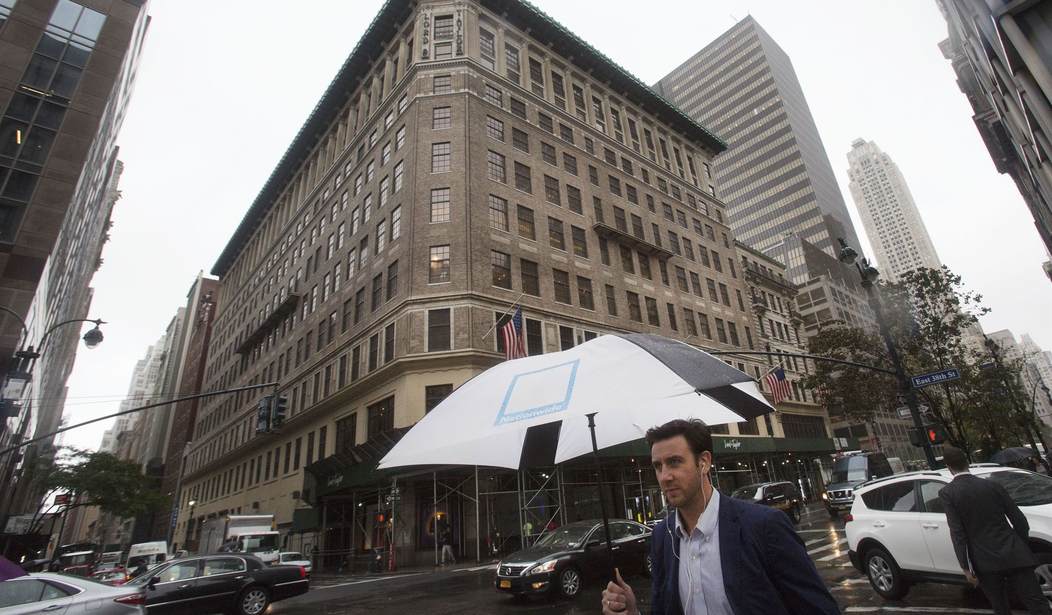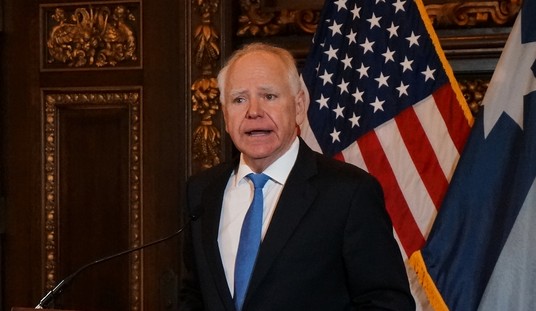The Biden administration, the media, Democrats, and Republicans are all either willfully ignorant or blithely unaware of the looming economic crisis that's about to hit. Inflation is part of the problem, but we're going beyond job creation reports and the fallout from Silicon Valley Bank. It's a crisis that could cause all the dominoes to fall, and it doesn't help that we have a president who gets outright exhausted after a few days of work. A looming real estate crisis threatens to nuke the whole system. The bleeding has already begun, and it could take decades for some "superstar cities" to recover, while some will tragically remain lost in the wilderness.
Office space and commercial real estate have become the Achilles heel of the economy, made even more vulnerable thanks to the COVID pandemic. Working from home exposed some companies to the benefits of not having an office, leading to cost-saving decisions to cut overhead costs. J.P. Morgan thought its office culture would return to normal once the COVID Nazis allowed us to go outside. Instead, he's cutting his New York footprint.
In June, Dror Poleg had a lengthy piece in The Atlantic that gave an apocalyptic economic projection, breaking down this pending crisis where banks and cities are about to endure a brutal blow to their balance sheets. With interest rates rising, landlords big and small are looking to turn their keys over to the bank in strategic foreclosure. Poleg, a financial investor and author who concentrates on technology's impact on urban economies, even quotes John Maynard Keynes regarding this trend: if you owe the bank $1,000, you're at their mercy, but if you owe them $1 million, the roles are reversed.
You see that in San Francisco, where downtown property values have plummeted by hundreds of millions of dollars. The owners of the Westfield San Francisco Centre shopping center gave their vote of confidence regarding a potential Bay Area comeback: they left. Seeing a $558 million mortgage on their books, they opted to give up the property to the bank. And they're not the only ones; there's a retail exodus occurring in the city.
Recommended
Inflation and interest rates devalue these assets, impacting the banks and those who have invested portions of their portfolios in commercial real estate. Some pension funds have invested in these so-called "alternative investment" opportunities within real estate and private equity. The loans will be called in, and the pain will be indescribable.
More people working from home and cutting into public transit revenue, coupled with a less than rapid return in the retail sector, have contributed to less cash flowing into the coffers of urban America. Suppose you've ever watched the movie "The Irishman." In that case, there's a quote from Christopher Walken, who played real-life mobster and loan shark Shondor Birns, which feels appropriate given urban America's decreasing revenues and debt payments: "There's going to be interest on the money."
Poleg gives a detailed breakdown of how everything is interconnected and what it could take to reverse course. It will take years of government spending and a bailout to ensure everything doesn't go to hell. He also adds that the 1990s internet craze provided the theory that superstar cities would create a perpetual revenue base since the best and brightest in the fields of innovation would concentrate in these areas, despite the flow of goods being more efficient than ever. The problem, as he saw it, was that once online innovation became established, you could be productive anywhere, and people didn't need to move to cities as long as there was internet access (via The Atlantic/MSN):
During the first three months of 2023, U.S. office vacancy topped 20 percent for the first time in decades. In San Francisco, Dallas, and Houston, vacancy rates are as high as 25 percent. These figures understate the severity of the crisis because they only cover spaces that are no longer leased. Most office leases were signed before the pandemic and have yet to come up for renewal. Actual office use points to a further decrease in demand. Attendance in the 10 largest business districts is still below 50 percent of its pre-COVID level, as white-collar employees spend an estimated 28 percent of their workdays at home.
With a third of all office leases expiring by 2026, we can expect higher vacancies, significantly lower rents, or both. And while we wrestle with the effects of distributed work, artificial intelligence could drive office demand even lower. Some pundits point out that the most expensive offices are still doing okay and that others could be saved by introducing new amenities and services. But landlords can’t very well lease all empty retail stores to Louis Vuitton and Apple. There’s simply not enough demand for such space, and new features make buildings even more expensive to build and operate.
With such grim prospects, some landlords are threatening to “give the keys back to the bank.” Over the past few months, the property giants RXR, Columbia Property Trust, Brookfield Asset Management, and others have collectively defaulted on billions in commercial-property loans. Such defaults are partly an indication of real struggles and partly a game of chicken. Most commercial loans were issued before the pandemic, when offices were full and interest rates were low.
[…]
Banks have many reasons to worry. Rising interest rates have devalued other assets on their balance sheets, especially government bonds, leaving them vulnerable to bank runs. In recent months, Silicon Valley Bank, First Republic, and Signature all collapsed. Regional institutions like these account for nearly 70 percent of all commercial-property bank loans. Pushing down the valuation of office buildings or taking possession of foreclosed properties would further weaken their balance sheets.
Municipal governments have even more to worry about. Property taxes underpin city budgets. In New York City, such taxes generate approximately 40 percent of revenue. Commercial property—mostly offices—contributes about 40 percent of these taxes, or 16 percent of the city’s total tax revenue. In San Francisco, property taxes contribute a lower share, but offices and retail appear to be in an even worse state.
Empty offices also contribute to lower retail sales and public-transport usage. In New York City, weekday subway trips are 65 percent of their 2019 level—though they’re trending up—and public-transport revenue has declined by $2.4 billion. Meanwhile, more than 40,000 retail-sector jobs lost since 2019 have yet to return. A recent study by an NYU professor named Arpit Gupta and others estimate a 6.5 percent “fiscal hole” in the city’s budget due to declining office and retail valuations. Such a hole “would need to be plugged by raising tax rates or cutting government spending.”
Many cities face a difficult choice. If they cut certain services, they could become less attractive and trigger a possible “urban doom loop” that pushes even more people away, hurts revenue, and perpetuates a cycle of decline. If they raise taxes, they could alienate wealthy residents, who are now more mobile than ever. Residents making $200,000 or more contributed 71 percent of New York State’s income taxes in 2019. Losing wealthy residents to low-tax states such as Florida and Texas is already taking a toll on New York and California. The income-tax base of both states has shrunk by tens of billions since the pandemic began.
Finally, turmoil in office markets threatens retirement systems and the portfolios of individual people. Public and private pension funds have traditionally kept their assets in stocks, bonds, and cash. However, in recent decades, they have shifted toward so-called alternative investments, including commercial real estate and private equity. These investments now comprise a third of their portfolios, with real estate comprising more than half of these assets for many pension funds.
[…]
Cities will have to survive and adapt. In a world of consumer choice, locations must think like consumer products. One way to win is to double down on what only the biggest cities can offer—walkable streets, car-free transportation, and cultural and intellectual diversity. But smaller cities can emphasize shorter commutes, ample parking, proximity to nature, better schools, and lower taxes.
[…]
Cities can also lean into public-private partnerships. Such partnerships bring public and private resources together to finance, build, and maintain public facilities and spaces. In the late 20th century, such partnerships in New York City helped rejuvenate Times Square, revive Bryant Park, build the High Line and Brooklyn Bridge Park, and fund the New York Public Library. When executed properly, public-private partnerships can inject billions into urban development without sacrificing the broader public interest.
Realistically, though, whatever resources cities can muster won’t be enough. The federal government will have to provide significant, ongoing assistance.
Poleg adds that not every city can be saved (Pittsburgh has never recovered from the shifts in the economic climate) and warned that while New Yorkers are used to seeing a comeback, that could take decades, given the current economic climate. How revenue is shared among states, cities, and counties is also a subject for revision since his article cites how urban areas often don't receive enough cash from city workers who pay the lion's share of their taxes elsewhere.
On top of this incoming disaster, we have one of the largest labor union strikes on the horizon this summer as the Teamsters quietly prepare for war with UPS as their contract expires. There was hope that a crisis could be averted with concessions like air-conditioned delivery trucks, but things have broken down. If a strike happens, 350,000 Teamster members, who work as drivers for UPS, will walk out on the job.
The economy is hanging on by a thread, but no one will tell you.
























Join the conversation as a VIP Member